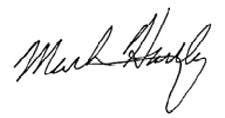I was baking pizzas and cleaning carpets when I last worked part-time
Later, when I became an adult, my parents recalled my spending habits as carefully saving every penny for a period of time and then spending every last dime on some desired extravagance. My recollection of my years as a teenager was working part-time after school hours and being broke when I graduated. That last extravagance must have been a doozy. Part-time work turned into full-time work, and I now have no trouble remembering what the utility bill is.
I remember being a little puzzled when I first began working with dental hygienists in 1985. However, I wasn’t baffled by the notion that at least some female dental hygienists sought a part-time career and even a shorter career at times. Women who entered publishing alongside me had long-term objectives and worked the long hours. But it was generally OK then not to strongly encourage women into navigating the work/life balance. On a more current note, you have to consider the impact of the recession 10 years ago where both male and female dental hygienists struggled to find the hours they needed to sustain their careers and families. Finally, some dental employers save by not offering work benefits to part-time dental hygienists.
How much of all this lingers today? RDH eVillage initiated a survey of dental hygienists in May about part-time vs. full-time work schedules. Since it’s been approximately 40 years since I worked at a job part time, I was curious about what has changed.
In recent years, millennials have raised legitimate questions about the family/work balance in terms of their careers. According to the survey, 24% of millennials would prefer to work fewer hours; 12% would prefer to work more hours as a dental hygienist. In contrast, only 8% of those baby boomers (with perhaps retirement on their minds) want more hours; 20% would prefer to work fewer hours.
Dental hygienists often tout career flexibility as a benefit of being in the profession. We asked the respondents to identify factors that influence their current work schedules, including work/life balance (36% for baby boomers, 50% for millennials); avoidance of occupational injuries (24% for baby boomers, 27% for millennials); the local job market (11% for baby boomers, 24% for millennials); children or support of other family members (9% for baby boomers, 39% for millennials); and individual or family financial requirements (39% for baby boomers, 50% for millennials).
As the statistics suggest, millennials are very much at an age where they recognize the importance of the factors controlling how many hours they need to work on a weekly basis. That doesn’t mean millennial hygienists are not wishing for less time at the dental office, though; 60% said the flexibility of part-time work was a factor behind their choice to enter the profession (40% said this flexibility was attractive to them before they even started dental hygiene school). As one millennial stated, “It is very useful to be in a profession where you know that you have an option of working part time. In order to find a balance between work and the rest of life, a part-time job is sometimes necessary.”
Mark Hartley


